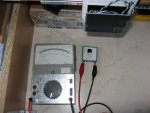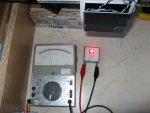Warske
0
- Joined
- Mar 10, 2009
- Messages
- 145
- Points
- 0
Yes, if you get it close enough it will read an area on the circuit board as small as about 1/4 inch. Good for finding hot spots.I never realized those themometers had gotten that cheap by now. Could be useful for diagnosing electronic circuits as well.
Great! I don't think you will be disappointed. I'm looking forward to your feedback!Im trying this out soonlooks great and will give a rough idea
I bought about 8 of those...Harbor Freight also has helping hands available with two clamps and a magnifying glass for $1.89 on sale...
Excellent! It shouldn't take very long, I think....I'll build one of these as soon as I get home with the materials...
Yes, linear within a few percent. The radiation and convection effects are, in fact, slightly non-linear over the range of interest, but a linear approximation works very well.The relationship between temperature and laser power is linear, correct? In other words, can I simply take the percentage difference in temperature and then multiply this by the output of the known laser in order to determine the output of the other laser?
So if you take two stable lasers, measure the temperature rise of each separately, then the temperature rise of both hitting the target at the same time, the second temperature rise will be the sum of the first two. You can try this. The green lasers usually aren't very stable, so I expect this test will not work as well if you use green. But this meter does respond fast enough so that you can watch the temperature change as the green laser power changes.





